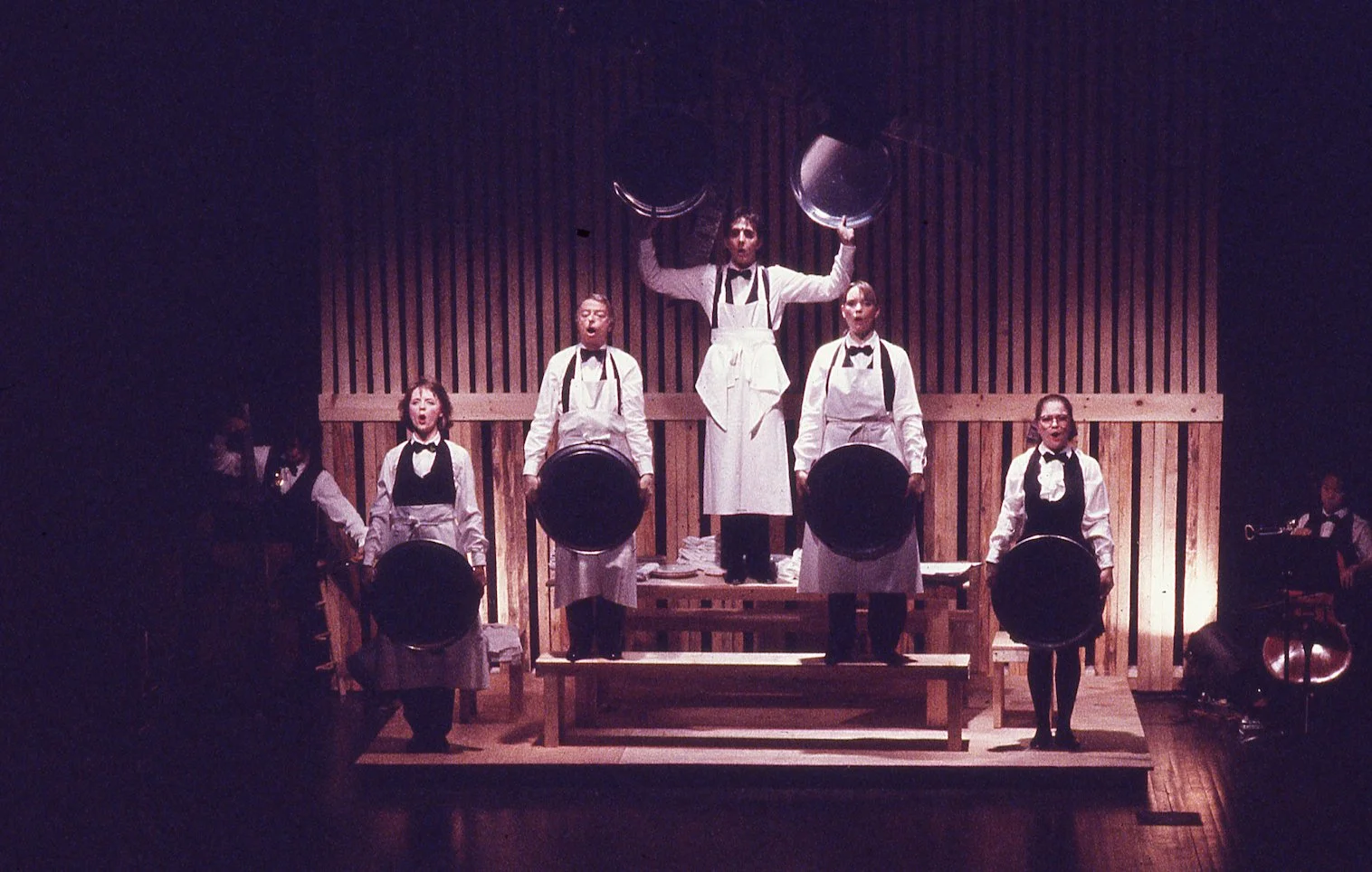
The Civil War Chronicles:
Blue Scene Grey
The second chapter of the The Civil War Chronicles covers the 80 years (1781-1861) during which the states unite and become the United States of America and then break apart at the beginning of the Civil War. Blue Scene Grey is neither completely historical nor completely fictional. It is Mussmann’s curious approach to the prelude to the war between the states.
Major events are minor, and minor become major. Old and new meet and fuse to create a new version of history where we see myths re-invented and diverted into a contemporary imagination of the past. Mussmann’s persistent reparations and overlaying give a new twist to things that we think we know or are worth forgetting.
October, 1987
Marrymount Manhattan Theatre, New York, NY
written, designed, and directed by LINDA MUSSMANN
in collaboration with CLAUDIA BRUCE
music composed and orchestrated by SEMIH FIRINCIOĞLU
set design by PETER BERRY & PAUL BLUTTER in collaboration with LINDA MUSSMANN
costumes by CLAUDIA BRUCE assisted by BARBARA WOLFE
performed by KENNETH BARNES-FRENCH, CLAUDIA BRUCE, TOM ERICSON, PATRICIA FOCHTMAN, SUSAN KOCH, LAURA KOLB, and SHAWN POWERS
orchestra: BEVERLY AU (cello), SEMIH FIRINCIOĞLU (piano, mandolin), STEVE MALLARDI (acoustic bass), GRETCHEN PAXSON (violin), JACALYN STANGER (viola)
promotional art by DAVID FIGUEROA
“This and that, here and there, them and us, roads and rivers, me and you, grey and blue…
how is it possible to sort all these things out?”
Rebecca Schneider, Valley Women’s Voice:
“Danced and sung in a grand American musical style, Blue Scene Grey begins with the organization of the original 13 states and proceeds to the start of the Civil War — 1781 to 1861 in an hour and a half of fast-paced action. The stage is set with platforms and lined with saloon-type swinging doors. In continual motion, performers enter and exit, as the states enter and secede on the eve of the war.
Dressed as waiters wielding shiny silver trays, the performers fold accumulating piles of linens and stack increasing numbers of plates until their theatrical presentations of historical dates, events, and “characters seem like specials on a menu for the spectator’s consumption. The “show” is interspersed with dialogue between two women who try on glasses (different perspectives) and discuss, in a series of vaudevillian asides, what it means to “know something.”
Jennifer Dunning, The New York Times:
“Claudia Bruce, Ms. Mussmann’s collaborator on the piece, sings of Marry Willie, a solitary but bravely optimistic Plains widow who was Ms. Mussmann’s grandmother.”
Robert L. Daniels, Stage Door:
“Woven into the panoramic tapestry is a good deal of wit. The music composed by Semih Firincioğlu, is flavorful and melodic, most especially during the gold rush of ’49 section when a plaintive mandolin solo sets the scene. The lilting folksy flavor of the music might have nicely served a John Ford western film, and its homey thrust seems pure Americana.”
Robert L. Daniels, Stage Door:
“Under the ominous spinning arms of a surrealistic windmill, time edges on…
The finale with Bruce as Robert E. Lee astride a giant rocking horse and Barnes-French as John Brown molderin’ in the grave, sets an eerie tone for the bloody events which will follow.”
“The sounds sights, and cadences of the work are equal to that of views in the prelude through binoculars or from a birds-eye view. We scan the distant scenes and we see and hear the faint sounds on the landscape filled with fictional and historical events that are a blended with dance, speech, music, and vistas to amuse and amaze the viewer of this cycloramic spectacle.” -Linda Mussmann














